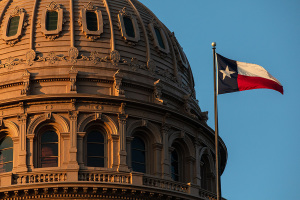Travel: In Geneva, John Calvin is hidden in plain sight

Geneva has moved on from John Calvin.
In fact, Switzerland’s second-biggest city has been majority Roman Catholic for decades.
Popularized by tourists during the Belle Epoque, most visitors are drawn by chocolate, luxury watches or work (think banking and international organizations). There is also a somewhat under-the-radar wine scene that is beginning to rival better-known appellations across the border in France.
Few seem to know or appreciate that this was arguably the most important city of the Reformation. After all, Geneva was where Calvin formulated the strain of Protestantism known as Calvinism and the eponymous Geneva Bible, which was later supplanted by the King James Bible, was printed.
I started my visit in the Old Town at St. Peter’s Cathedral.
Technically speaking, it ceased being a cathedral centuries ago. That’s because the Protestant Church of Geneva, which enjoyed certain privileges as the state church of the Republic and Canton of Geneva until its disestablishment in 1907, hasn’t had the episcopacy since the last prince-bishop fled his see in 1533.
That aside, the cathedral — a blend of Romanesque and Gothic architecture with a neoclassical facade at the west front — is the city’s oldest continuously occupied location as the archeological excavation of Roman ruins in the crypt-level museum shows.

The pulpit on the north side of the nave was used by Calvin to preach twice every Sunday. The nearby plain wooden chair, which is roped off to prevent visitors from sitting in it and presumably taking a selfie, was also used by him.
As with other medieval churches and cathedrals that were expropriated by Protestants, the interior was whitewashed. Only the chapel in the southwest corner has an ornate appearance similar to how the entire cathedral would have looked before the Reformation.
Across Rue du Cloître, a lane whose name translates into English as Cloister Street, is the International Museum of the Reformation. Unfortunately, the museum has been closed since 2021 for a renovation that was supposed to last just one year.
Another closed landmark is the Calvin Auditorium.
The plain chapel, which dates to the 15th century, was where Calvin and his contemporaries, including John Knox, lectured on weekdays. It was during this time that French-speaking Geneva, then an independent republic, was a safe haven for the English Protestants, aka the Marian exiles, who sought refuge from the brutal reign of Roman Catholic Queen Mary.
While Calvin gets the credit for Geneva’s role in the Reformation, many others played a part. Their collective theological contributions resulted in what later became the Congregational, Reformed and Presbyterian denominations.

One of the others is Antoine Froment.
In 1533 — three years before the city officially outlawed the church of Rome — a 25-year-old Froment delivered the first public Protestant sermon in Geneva at Molard Square. The square still exists and is lined by cafes and shops popular with Genevans.
Without question, the most visible reminder of Calvin is the Reformation Wall.
Located within Bastion Park, which reminded me of New York City’s Central Park and Luxembourg Gardens in Paris, are statues of Calvin, Knox, Roger Williams, Oliver Cromwell and others built into the old city walls.
If you go
Walking in the steps of Calvin is easier said than done as many notable sights are unmarked or closed.
To get the most out of your visit, bring along a copy of “John Calvin’s Geneva.” The indispensable guidebook by John Glass sells for about $25 at bookstores.
Visiting St. Peter’s is free, though a nominal charge applies to enter the museum or climb the 157 steps to the top of the north tower for sweeping views of Geneva’s cityscape.
The only consistent way to get inside the Calvin Auditorium is during the weekly Sunday service of the Church of Scotland (Presbyterian) congregation at 11 a.m.
I stayed at the Geneva Marriott Hotel just a few weeks after its opening.
The hotel feels more like an upscale boutique hotel than a tired old Marriott. While located close to the airport, touristy Geneva around Lake Geneva, which attracted Lord Byron and other Romantic poets, is a short ride away using the tram from the station directly in front of the hotel. For those who prefer walking, St. Peter’s can be reached in about 50 minutes at a moderate pace.
Consider eating at the Cottage Cafe, which is located next to the Brunswick Monument. For something decidedly more local, head to Old Town and try either the family-owned restaurant Hotel de Ville or Cafe Clemence, the latter of which faces the oldest square in Geneva.
Trip planning resources are available through the Switzerland Tourism website.
Dennis Lennox writes a travel column for The Christian Post.
Dennis Lennox writes about travel, politics and religious affairs. He has been published in the Financial Times, Independent, The Detroit News, Toronto Sun and other publications. Follow @dennislennox on Twitter.



























